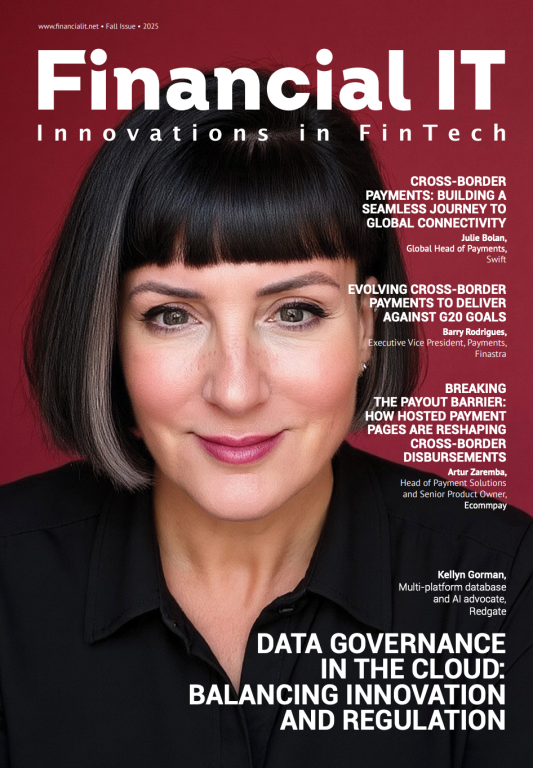Why Legacy Technology Is No Longer Sustainable for Payments Operations in 2025

- Nick Botha, Global Payments Lead at AutoRek
- 30.04.2025 02:45 pm #LegacySystems #PaymentsModernization
As the world races towards a cashless future, the sheer scale of digital transactions is skyrocketing, pushing payment systems to their limits. Soaring transaction volumes are putting a strain on payment infrastructures, meaning the rising costs of payment processing are firmly in the spotlight. While higher volumes should mean higher revenues, 90% of organisations are burdened by outdated legacy systems that drive up costs, create inefficiencies and limit their ability to scale profitably.
It's no secret that legacy systems are ill-equipped to handle the modern demands of real-time payments, automation, and evolving regulatory requirements. As transaction volumes soar, firms relying on manual processes, spreadsheet-based reconciliations, and siloed data systems face rising operational costs and compliance risks. With transaction volumes growing by an average of 32% over the past two years, the inability to process and reconcile payments efficiently is becoming a fundamental business risk, with it potentially leading to rising operational costs, compliance and regulatory penalties, security vulnerabilities, and disadvantages over competitors, among other issues.
Despite these challenges, businesses are starting to take action. Automation is now on the roadmap for 82% of payment firms, and artificial intelligence (AI) is expected to drive significant transformation over the next two years. In fact, standardising data formats, adopting global financial frameworks like ISO 20022, and eliminating reliance on spreadsheets will be key to ensuring efficiency, compliance, and long-term profitability.
The critical challenges posed by legacy technology
Once the backbone of financial operations, legacy technology has now become a liability. These outdated systems are unable to handle the increasing complexity and volume of payment data, making it difficult for organisations to scale, adapt to new payment methods, and remain compliant - all while keeping costs under control. Manual processes and spreadsheet-based reconciliations are no longer fit for purpose in a fast-moving and highly regulated environment.
One of the biggest challenges is the incompatibility between legacy infrastructure and modern payment solutions. Many firms find themselves trapped in a diseconomy of scale – where increased transaction volumes should enhance profitability, but instead, legacy systems drive up costs and reduce efficiency.
This problem is exacerbated by industry consolidation. Mergers and acquisitions have left businesses with fragmented data processing solutions, often bolted together without a clear integration strategy. As a result, firms either continue using inefficient legacy systems or implement new technology that fails to optimise their data processing needs. Without a strategic approach to modernisation, firms will continue to face escalating operational costs, regulatory scrutiny, and barriers to scalability.
How operational inefficiencies drive up costs
Many payment firms operate at a loss or are not yet profitable, relying heavily on front-end growth to generate the transaction volumes necessary for revenue. However, this volume-driven strategy often comes at the expense of operational efficiency. By focusing primarily on customer acquisition, firms frequently neglect critical investments in back-office processes, technology, and automation that are essential for handling rising transaction volumes effectively.
Rather than addressing inefficiencies through transformative investments, many firms opt for short-term fixes, such as expanding middle and back-office headcount. While this provides temporary relief, it fails to resolve the underlying structural issues. The cost of inefficiencies and errors continues to escalate, with organisations struggling to reconcile transactions effectively.
The regulatory risks of legacy systems
Failing to modernise payment processing not only impacts efficiency but also heightens regulatory risks. As financial regulations evolve to address the growing intricacies of payment data, legacy systems and manual processes struggle to keep pace. In fact, 75% of industry leaders anticipate that tightening regulations over the next two years will pose significant challenges for their businesses.
Regardless of whether regulatory scrutiny increases or decreases, one thing remains constant: the need for payment firms to ensure security, accuracy, and compliance. Many legacy systems lack the agility to support evolving safeguarding requirements. The Financial Conduct Authority (FCA) is currently working on new safeguarding guidelines, expected to mirror the rigid standards of its Client Asset Sourcebook (CASS), requiring firms to ensure customer assets are protected in the event of business failure. Legacy technology, with its siloed data and manual processes, makes it challenging to meet these expectations efficiently.
Firms operating across multiple jurisdictions must be prepared for both regulatory tightening and relaxation, depending on their markets. Rigid, outdated systems make it difficult to adapt to these shifting compliance landscapes, leaving firms vulnerable to financial penalties, reputational damage, and operational disruptions. To navigate this complex environment efficiently, payments firms must move beyond outdated systems and embrace modern, automated solutions. A robust, efficient back-office that meets regulatory standards while ensuring their data is accurate for reconciliation and reporting. Having the support of a technology partner that has a dedicated safeguarding solution will allow payments firms to meet upcoming regulatory requirements in an efficient manner.
The role of automation and AI in modernising payments processing
While the need for transformation is widely acknowledged, many organisations require guidance and support to navigate the complexities of implementing new systems and processes. Addressing the challenges posed by legacy systems, fragmented data standards, and manual processes requires a multi-layered approach rooted in modernisation, standardisation, and automation.
Upgrading legacy systems is a critical first step, but AI alone will not solve the industry’s inefficiencies overnight. While AI is highly effective for probabilistic tasks like intelligently retrying failed payments, payments reconciliation requires explainable, rule-based decision-making, particularly in the face of regulatory scrutiny.
The real solution lies in transitioning to integrated, automated payment systems. By consolidating data sources, standardising formats, and adopting a unified data management approach, firms can streamline operations, improve regulatory compliance, and future-proof their payment infrastructure.
AI is already playing a significant role in financial operations, with 39% of payments professionals identifying it as the most impactful technology shift for the next two years. Although AI-driven customer-facing applications are still developing, back-office automation is already transforming payment processing, enabling faster, more efficient data handling, reducing delays, and empowering businesses to scale with greater agility.
Redefining payments for a digital-first era
Future-proofing payments operations is no longer optional - it is essential for long-term success. Firms that continue relying on legacy technology will struggle with mounting operational costs, regulatory pressure, and scalability challenges. By modernising their IT systems and collaborating with fintech innovators, firms will be best positioned to navigate increasing transaction volumes, regulatory changes, and most importantly evolving customer expectations.



















